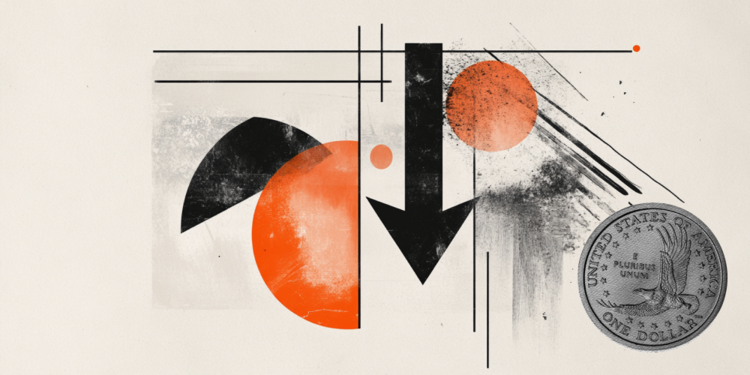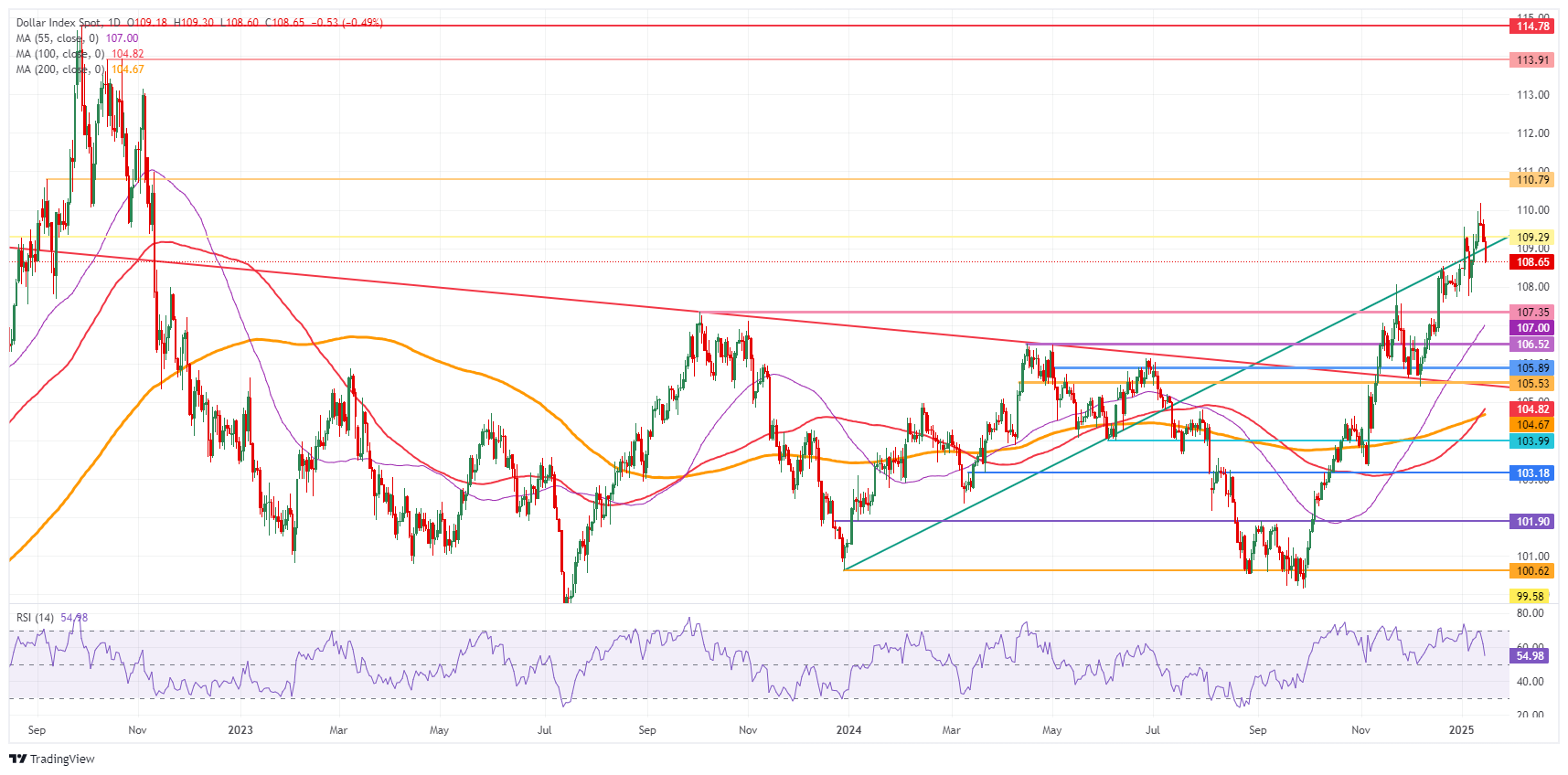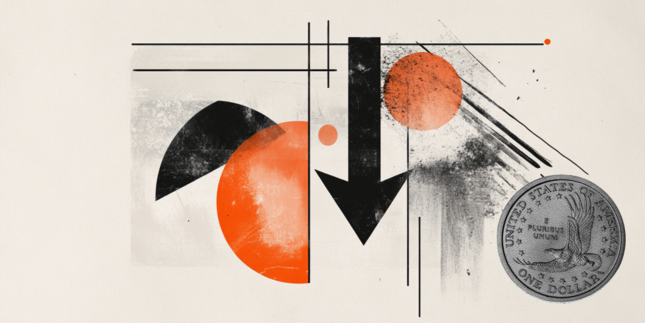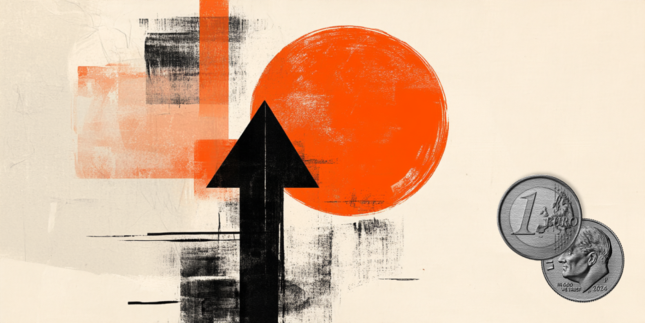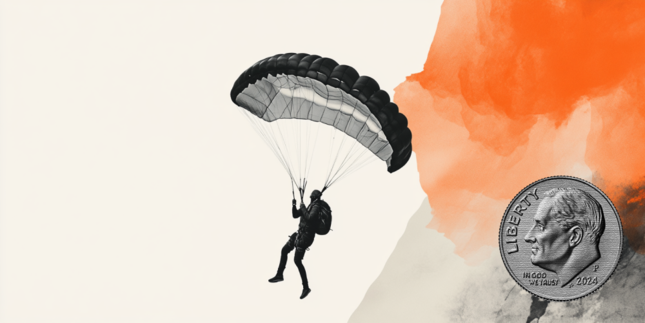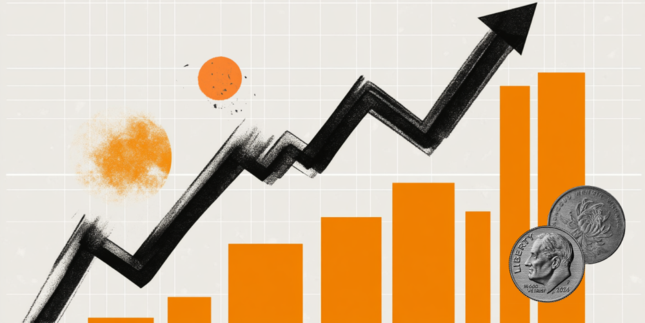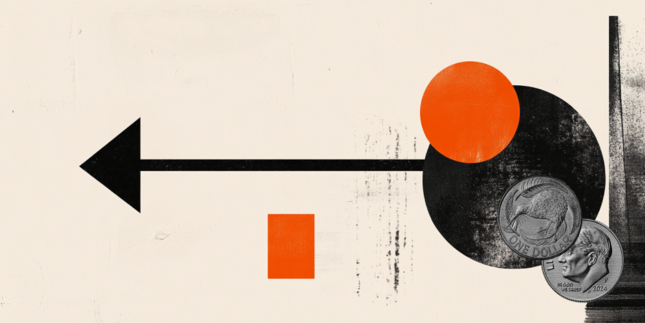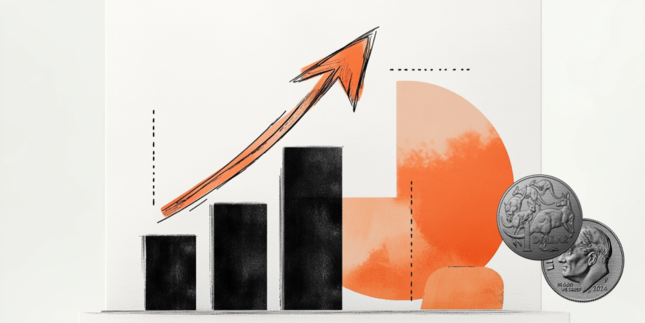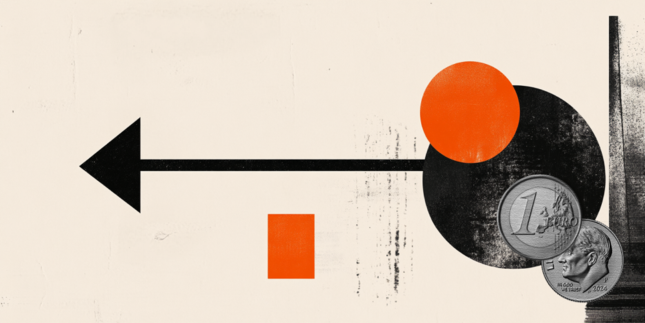US Dollar sinks after CPI came in broadly in line with expectations
- The US Dollar turns this week into a firm loss, eking out more losses.
- The US December CPI release came in a touch softer as expected.
- The US Dollar Index (DXY) snaps below 109.00 and could start to pick up more downside from here.
The US Dollar Index (DXY), which tracks the Greenback’s value against six major currencies, is heading lower on Wednesday in the US Consumer Price Index (CPI) release aftermath. Numbers came in either in line or a touch softer than expected, which is perceived as disinflationary. Although it was not a stellar surprise as on Tuesday with the Producer Price Index (PPI), where all data points came in lower or at the lowest estimate, the CPI reading is enough to bring back that initial Federal Reserve rate cut for 2025 from September to July.
For the remainder of this Wednesday all eyes will shift to the Federal Reserve speakers. They might come out with some guidance or even cautious guidance that the number of rate cuts might not match market expectations.
Daily digest market movers: In line and markets go crazy
- The US Consumer Price Index data for December has been released.
- The monthly core CPI came in as expected at 0.2% compared to 0.3% the previous month. The monthly headline CPI increased steadily by 0.4% against 0.3% expected.
- The yearly core CPI reading rose steadily by 3.2%, while the headline reading ticked up 2.9% compared to 2.7% in November.
- At 14:00 GMT, Federal Reserve Bank of Chicago President Austan Goolsbee will discuss the economy at the Wisconsin Bankers Association 2025 Midwest Economic Forecast Forum.
- At 15:00 GMT, Minneapolis Fed President Neel Kashkari will give welcoming remarks and participate in a fireside chat with Jay Debertin, President and CEO of CHS, Inc., as part of the Minneapolis Fed’s 2025 Regional Economic Conditions Conference.
- At 16:00 GMT, Federal Reserve Bank of New York President John Williams delivers keynote remarks at the "CBIA Economic Summit and Outlook 2025" event organized by the Connecticut Business and Industry Association (CBIA) in Connecticut.
- Equities are rallying over 1% in both Europe and the US on the back of the US CPI release.
- The CME FedWatch Tool projects a 97.3% chance that interest rates will be kept unchanged at current levels in the January meeting. Expectations are for the Federal Reserve (Fed) to remain data-dependent with uncertainties that could influence the inflation path once President-elect Donald Trump takes office on January 20.
- US yields are nosediving in the CPI release aftermath. The 10-year benchmark trades around 4.654% at the time of writing on Wednesday, fading from its fresh 14-month high of 4.802% seen on Monday.
US Dollar Index Technical Analysis: Time to correct
The US Dollar Index (DXY) has become volatile, and it has the Federal Reserve to thank. With little to no real guidance from Fed officials, markets need to treat each data point as an assessment of where they think the Fed will initiate its policy rate move this year. Jumping from one data point to the next, it is quite normal for the DXY to also jump around the chart and see a volatility peak.
On the upside, the 110.00 psychological level remains the key resistance to beat. Further up, the next big upside level to hit before advancing any further remains at 110.79. Once beyond there, it is quite a stretch to 113.91, the double top from October 2022.
On the downside, the DXY is testing the ascending trend line from December 2023, which currently comes in around 108.95 as nearby support. In case of more downside, the next support is 107.35. Further down, the next level that might halt any selling pressure is 106.52, with interim support at the 55-day Simple Moving Average (SMA) at 107.01.
US Dollar Index: Daily Chart
Central banks FAQs
Central Banks have a key mandate which is making sure that there is price stability in a country or region. Economies are constantly facing inflation or deflation when prices for certain goods and services are fluctuating. Constant rising prices for the same goods means inflation, constant lowered prices for the same goods means deflation. It is the task of the central bank to keep the demand in line by tweaking its policy rate. For the biggest central banks like the US Federal Reserve (Fed), the European Central Bank (ECB) or the Bank of England (BoE), the mandate is to keep inflation close to 2%.
A central bank has one important tool at its disposal to get inflation higher or lower, and that is by tweaking its benchmark policy rate, commonly known as interest rate. On pre-communicated moments, the central bank will issue a statement with its policy rate and provide additional reasoning on why it is either remaining or changing (cutting or hiking) it. Local banks will adjust their savings and lending rates accordingly, which in turn will make it either harder or easier for people to earn on their savings or for companies to take out loans and make investments in their businesses. When the central bank hikes interest rates substantially, this is called monetary tightening. When it is cutting its benchmark rate, it is called monetary easing.
A central bank is often politically independent. Members of the central bank policy board are passing through a series of panels and hearings before being appointed to a policy board seat. Each member in that board often has a certain conviction on how the central bank should control inflation and the subsequent monetary policy. Members that want a very loose monetary policy, with low rates and cheap lending, to boost the economy substantially while being content to see inflation slightly above 2%, are called ‘doves’. Members that rather want to see higher rates to reward savings and want to keep a lit on inflation at all time are called ‘hawks’ and will not rest until inflation is at or just below 2%.
Normally, there is a chairman or president who leads each meeting, needs to create a consensus between the hawks or doves and has his or her final say when it would come down to a vote split to avoid a 50-50 tie on whether the current policy should be adjusted. The chairman will deliver speeches which often can be followed live, where the current monetary stance and outlook is being communicated. A central bank will try to push forward its monetary policy without triggering violent swings in rates, equities, or its currency. All members of the central bank will channel their stance toward the markets in advance of a policy meeting event. A few days before a policy meeting takes place until the new policy has been communicated, members are forbidden to talk publicly. This is called the blackout period.
Forex News
Keep up with the financial markets, know what's happening and what is affecting the markets with our latest market updates. Analyze market movers, trends and build your trading strategies accordingly.
